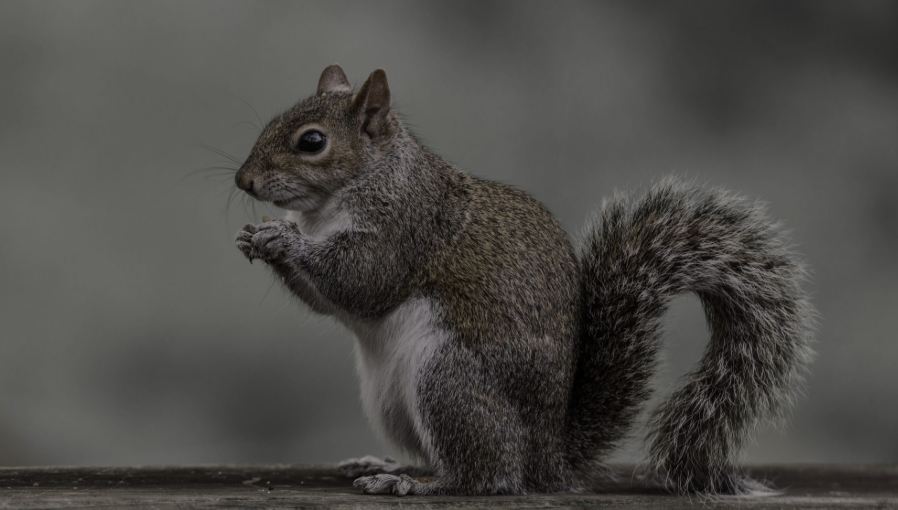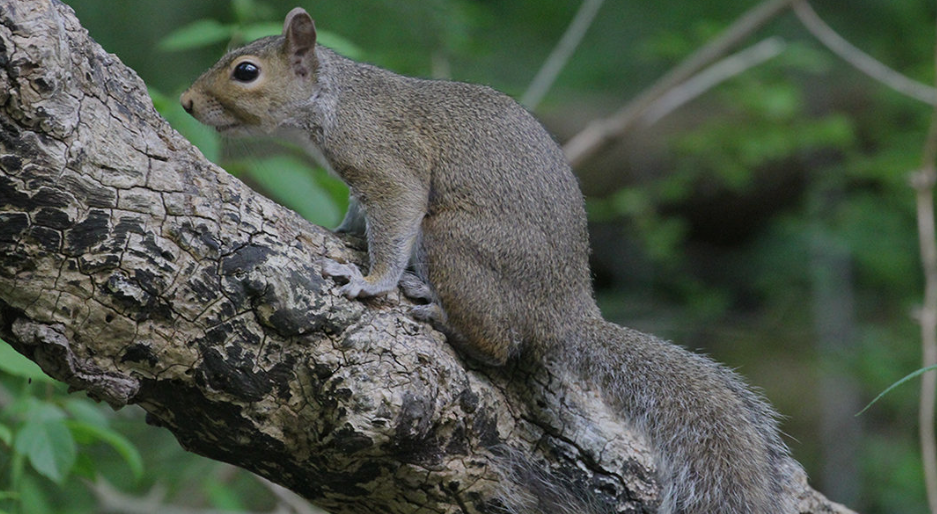
Squirrels are small to medium-sized rodents belonging to the family Sciuridae, which includes tree squirrels, ground squirrels, and flying squirrels. They are known for their bushy tails, sharp claws, and remarkable agility, traits that allow them to navigate trees, burrows, and rocky terrain with ease. Found almost everywhere except Antarctica and some remote islands, squirrels occupy a wide variety of habitats, including forests, grasslands, deserts, and even urban areas. Their adaptability and varied diets have made them one of the most successful and widespread rodent families in the world.
Tree squirrels are perhaps the most familiar type to many people. These squirrels are primarily arboreal and are recognized for their acrobatic abilities, leaping from branch to branch in search of food. They feed on a variety of nuts, seeds, fruits, and occasionally insects or bird eggs. Their bushy tails serve multiple functions: balancing while navigating trees, signaling to other squirrels, and providing warmth during cold weather. Tree squirrels often build nests called dreys, made of leaves and twigs, high in the canopy for safety.
Ground squirrels, in contrast, spend most of their time on the forest floor or open grasslands. They dig extensive burrow systems that provide shelter from predators and harsh weather and are often highly social, living in colonies. Ground squirrels feed on seeds, roots, fruits, and insects, and many species, such as the prairie dog or the African striped ground squirrel, play important roles in soil aeration and ecosystem maintenance. Some ground squirrels hibernate during the winter months, conserving energy when food is scarce.
Flying squirrels represent another fascinating adaptation within the squirrel family. Found mostly in North America and Asia, flying squirrels are nocturnal and use a membrane called a patagium to glide between trees. This adaptation allows them to escape predators, search for food, and travel efficiently through dense forests. Flying squirrels feed on nuts, fruits, fungi, and occasionally small insects, and they typically nest in tree cavities or abandoned bird nests, often in groups for warmth and protection.

Types of Squirrels
Eastern Gray Squirrel (Sciurus carolinensis)
The Eastern gray squirrel is native to the eastern and midwestern United States and parts of Canada. It has gray fur with occasional brown tinges and is highly adaptable, often found in forests, parks, and suburban neighborhoods. They are famous for storing acorns and nuts for winter.
Red Squirrel (Sciurus vulgaris)
Native to Europe and parts of northern Asia, red squirrels have reddish-brown fur with a white underside and ear tufts. They prefer coniferous forests and are commonly found in the United Kingdom, Scandinavia, and Russia. Red squirrels face competition from the invasive Eastern gray squirrel in some areas.
Fox Squirrel (Sciurus niger)
The fox squirrel is one of the largest tree squirrels in North America, native to the eastern and central United States. It has reddish-orange fur with grayish tones and thrives in hardwood forests, parklands, and open wooded areas.
Indian Palm Squirrel (Funambulus palmarum)
This small, striped squirrel is native to southern and central India and Sri Lanka. It is commonly seen in urban and rural areas, often near human settlements, feeding on fruits, nuts, and small insects.
Northern Flying Squirrel (Glaucomys sabrinus)
Native to North America, this nocturnal squirrel inhabits coniferous and mixed forests across Canada and the northern United States. Unlike other squirrels, it can glide between trees using a membrane called a patagium.
Southern Flying Squirrel (Glaucomys volans)
Found in the eastern United States and parts of Mexico, the southern flying squirrel is smaller than the northern species. It is also nocturnal and glides between trees, often nesting in tree cavities and feeding on nuts, seeds, and insects.
Prevost’s Squirrel (Callosciurus prevostii)
Native to Southeast Asia, particularly Malaysia, Thailand, and Indonesia, Prevost’s squirrel has striking tricolored fur—black, white, and reddish-orange. It inhabits tropical forests and is primarily arboreal.
African Pygmy Squirrel (Myosciurus pumilio)
The smallest squirrel species in the world, the African pygmy squirrel is found in central African rainforests, including Cameroon, Gabon, and Equatorial Guinea. It rarely descends from the canopy and feeds on seeds, fruits, and small insects.
Red-Whiskered Bulbuls Squirrel (Tamiops mcclellandii)
Native to Southeast Asia, including Thailand, Myanmar, and southern China, this small striped squirrel is arboreal and prefers tropical and subtropical forests. It is active during the day and feeds on seeds, fruits, and insects.
Indian Giant Squirrel (Ratufa indica)
Also called the Malabar giant squirrel, this striking species is endemic to India, primarily in the forests of the Western Ghats and central India. It has a colorful coat with shades of black, brown, cream, and reddish-orange and can grow up to 1 meter in length, including its tail.
Hoary Marmot (Marmota caligata)
A large ground squirrel found in the mountainous regions of Alaska, western Canada, and the northwestern United States. Unlike tree squirrels, hoary marmots are terrestrial and live in burrows, hibernating during the winter months.
Alaskan Red Squirrel (Tamiasciurus hudsonicus)
Native to Alaska and northern North America, this tree squirrel has reddish fur and a white underbelly. It is highly territorial and stores large caches of seeds and nuts for winter survival.
Finlayson’s Squirrel (Callosciurus finlaysonii)
Found in Southeast Asia, particularly Thailand and Malaysia, this medium-sized squirrel is notable for its variability in color, including brown, black, and gray morphs. It inhabits forests and plantation areas and is highly agile in trees.
Japanese Dwarf Flying Squirrel (Pteromys momonga)
Endemic to Japan, particularly Honshu and Shikoku islands, this tiny flying squirrel is nocturnal and arboreal. It glides between trees using its patagium and feeds on nuts, fruits, and tree buds.
Northern African Ground Squirrel (Atlantoxerus getulus)
Native to North Africa, especially Morocco and Algeria, this species inhabits rocky and arid regions. It lives in colonies of burrows and primarily feeds on seeds, fruits, and roots.
Variegated Squirrel (Sciurus variegatoides)
Native to Central America, including Costa Rica and Panama, this squirrel has a distinctive variegated coat with black, brown, and orange streaks. It inhabits tropical forests and is primarily arboreal, feeding on nuts, fruits, and occasionally insects.
Red Giant Flying Squirrel (Petaurista petaurista)
Native to South and Southeast Asia, including India, Thailand, and Indonesia, this large flying squirrel has reddish-brown fur and a wide gliding membrane. It is nocturnal and primarily inhabits tropical and subtropical forests.
Belford’s Ground Squirrel (Spermophilus beldingi)
Found in the western United States, particularly in California and Oregon, Belford’s ground squirrel lives in open meadows and grasslands. It digs extensive burrows and hibernates during the winter.
Indian Palm Flying Squirrel (Petaurista philippensis)
Also called the large Malayan flying squirrel, this species inhabits India, Sri Lanka, and Southeast Asia. It is nocturnal, glides between trees, and feeds on fruits, seeds, and tree sap.
Southern African Tree Squirrel (Paraxerus cepapi)
Found in southern Africa, including South Africa, Namibia, and Botswana, this small tree squirrel has brownish fur and inhabits savannas, woodlands, and rocky outcrops. It is diurnal and feeds on seeds, fruits, and small insects.
Hoary Flying Squirrel (Pteromys volans)
Native to northern Eurasia, including Russia, Finland, and parts of Japan, this medium-sized flying squirrel has grayish fur with a white belly. It inhabits coniferous forests and is nocturnal, feeding on nuts, seeds, and buds.
Pallas’s Squirrel (Callosciurus erythraeus)
Native to Southeast Asia, particularly Myanmar, Thailand, and southern China, Pallas’s squirrel is highly adaptable. It has reddish-brown fur with cream markings and is commonly found in forests, plantations, and urban areas.
Hoary Marmot (Marmota caligata)
Native to the mountainous regions of Alaska, western Canada, and the northwestern United States, this large ground squirrel lives in alpine meadows and rocky slopes. It hibernates during winter and primarily feeds on grasses and herbs.
Borneo Black-Banded Squirrel (Callosciurus orestes)
Endemic to the highland forests of Borneo, this squirrel has a distinctive black and reddish-brown banded coat. It is arboreal and feeds on fruits, nuts, and insects, playing a role in seed dispersal in tropical forests.
Japanese Red-Bellied Squirrel (Callosciurus erythraeus japonicus)
Native to Japan, this small tree squirrel is arboreal and found in forests and wooded urban areas. It has reddish fur on the belly and a grayish back, feeding primarily on seeds, nuts, and fruits.
Northern Luzon Giant Cloud Rat (Phloeomys pallidus)
Found in northern Luzon, Philippines, this is a large rodent closely related to squirrels, sometimes classified among squirrel-like rodents due to arboreal habits. It inhabits tropical forests and feeds on fruits, leaves, and bark.
Indian Striped Squirrel (Funambulus sublineatus)
Native to India and Sri Lanka, this small, fast-moving squirrel has four distinctive pale stripes along its back. It inhabits forests, plantations, and urban areas, feeding on nuts, fruits, seeds, and occasionally insects.
Dusky Giant Squirrel (Ratufa macroura)
Endemic to Sri Lanka, this large tree squirrel has dark brown to black fur with a bushy tail. It inhabits wet-zone tropical forests and feeds on fruits, nuts, and flowers.
Red-Bellied Tree Squirrel (Callosciurus erythraeus)
Native to Southeast Asia, including Thailand and southern China, this species has a reddish belly and dark back. It is primarily arboreal and feeds on fruits, seeds, and occasionally small insects.
African Striped Ground Squirrel (Euxerus erythropus)
Found in savannas and semi-arid regions of sub-Saharan Africa, this terrestrial squirrel has distinctive stripes on its back. It feeds on seeds, nuts, and small invertebrates and lives in burrows.
Hoary Squirrel (Sciurus nayaritensis)
Native to Mexico and parts of Central America, this tree squirrel has grayish-brown fur with lighter underparts. It inhabits forests and mountainous regions, feeding on fruits, seeds, and nuts.
Red-Cheeked Squirrel (Dremomys rufigenis)
Found in Southeast Asia, including Myanmar, Thailand, and Malaysia, this squirrel has reddish fur on the cheeks and a darker back. It is primarily arboreal, feeding on seeds, fruits, and small insects.